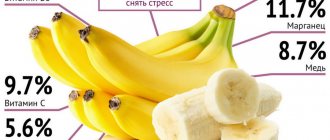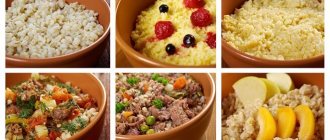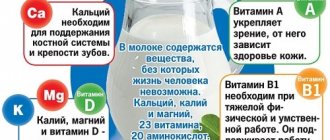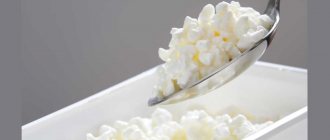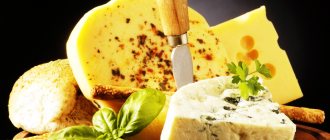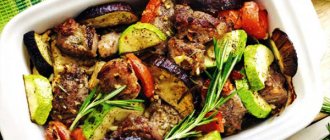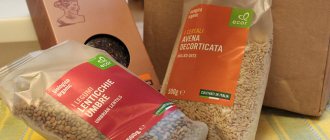Hello! Today I’ll tell you about cottage cheese - one of my main products that I use when losing weight. Cottage cheese is a protein fermented milk product that is sold in any modern store. It contains approximately 16-18 g of protein and up to 18 g of fat. That is, the same amount of protein as in beef or pork, and 2-3 times less fat - exactly what you need for weight loss. At the same time, cottage cheese is a very cheap source of protein. A pack of 300-400 g in our city costs up to 100 rubles. For comparison, the same amount of meat costs 200-250 rubles.
In short, cottage cheese is a real godsend for people losing weight)
Cottage cheese can be both a main and an additional product on a diet.
Basic - this means that we eat cottage cheese on its own, as the main product of the diet. The cottage cheese mono-diet is built on this approach for 3 and 7 days, when you eat only 5-9% cottage cheese, honey and some dried fruits for the corresponding period. I am categorically against such abuse of the body, so we will not consider it here.
Additional - this means that we simply include cottage cheese in our diet as a product to achieve the daily requirement for calories and dietary fat. I use exactly this method - I eat cottage cheese once a day in order to reach the protein requirement. This is very convenient, since gaining 164 g of protein per day from meat alone is quite problematic. At the same time, 300 g of “low-fat” cottage cheese immediately provides 48 g of protein at one time.
Including cottage cheese itself and complex dishes in the diet - dishes that contain cottage cheese as an integral part, for example, a casserole, reduces the total daily calorie content of food consumed. At the same time, you do not feel hungry - because there is a lot of protein, and you maintain the balance of nutrients and vitamins.
In addition to the fact that cottage cheese is an excellent product for weight loss, it has many other beneficial properties that have a positive effect on the human body.
Useful properties of cottage cheese
Here are the benefits of cottage cheese besides weight loss
- Reduces the risk of dental disease and bone fractures
- Helps maintain muscle mass
- Stimulates mental activity
- Increases concentration
- Increases stamina
- Reduces cholesterol levels
- Promotes the production of growth hormone (!)
- Increases hemoglobin levels in the blood
Etc.
Separately, I would like to dwell on the point about the production of growth hormone. Growth hormone or somatotropin is an anabolic hormone that our brain produces in the anterior pituitary gland. This hormone enhances protein synthesis and inhibits its breakdown, helps reduce the deposition of subcutaneous fat and enhances its combustion, and also affects the increase in the ratio of muscle mass to fat. This means that when we lose weight, we need a lot of growth hormone to maintain muscle loss, burn subcutaneous fat, and increase overall muscle mass. And cottage cheese helps in stimulating the production of this hormone.
Types of cottage cheese
Cottage cheese varies depending on the type of production. Cottage cheese is mainly made from raw, pasteurized, whole or low-fat milk. Method - fermentation with pure cultures of lactic acid bacteria with or without the addition of rennet powder and calcium chloride with partial removal of whey.
We will not dwell in detail on the technological process here - it is quite complicated. The main thing to take away is that depending on the type of production, the resulting cottage cheese is of different consistency and with different percentages of fat content. Fat content is what is important to us.
The percentage of fat content depends on the plant where the cottage cheese is made. For example, our plant - VMK Vologda Dairy Plant, produces fat - 9%, semi-fat - 5% and skim - 1.8%. The fact that 1.8% is called low-fat is not entirely true) Because real low-fat is when there is 0% fat. And this also happens.
As if “low-fat” cottage cheese, but in fact 1.8% fat content
Bold cottage cheese 5% fat
Main conclusions
For those who want to lose weight, cottage cheese will be a good helper. It will not only prevent you from breaking down, but will also make up for the deficiency of useful nutrients:
- Cottage cheese is rich in amino acids, vitamins and enzymes.
- It has a beneficial effect on the digestive and nervous system, the functioning of the heart and blood vessels.
- It can be safely used by diabetics, young children and the elderly.
- The product cannot be included in the diet of people with lactose intolerance.
- Cottage cheese that has expired can cause serious poisoning.
- For weight loss purposes, a product with a low fat content (no more than 4%) is suitable.
- Cottage cheese can be used in preparing salads, desserts, baked goods and hot dishes. It goes well with both berries and fruits, as well as vegetables.
- You can prepare cottage cheese dishes in the oven, slow cooker or microwave.
Recipes for dietary dishes made from cottage cheese are very variable. You can add and replace any ingredients. The main thing is not to go beyond calorie limits.
Share the best recipes for light dishes made from low-fat cottage cheese, as well as your stories of successful weight loss.
Nutritional value of cottage cheese
Depending on the fat content, cottage cheese may contain (in%): proteins - 13-18, fat - 0.6-18, carbohydrates - 3, milk sugar - 1-1.5, water - 64.7-77.7 , mineral substances 1-1.5. The energy value of 100 g of cottage cheese is 86-226 kcal.
Here is an example of the nutritional value of 9% cottage cheese
| Nutrient | Quantity, g |
| Squirrels | 18 |
| Fats | 9 |
| Carbohydrates | 3 |
| Cellulose | 0 |
| Water | 68 |
Calorie content of 9% cottage cheese : 169 kcal.
Glycemic index of cottage cheese: 27
Cottage cheese proteins contain all essential amino acids and have a beneficial effect on fat metabolism. That is, the protein and fat of cottage cheese are easily digestible. Therefore, it can be used for diseases of the liver, kidneys and stomach. And due to the fact that cottage cheese contains the amino acids methionine and choline, which help increase the content of lecithin in the blood, it can be used as a means of preventing atherosclerosis.
Diet dishes
The cottage cheese diet with kefir is considered very useful, the use of which is recommended by many experts. Due to the fact that it is not very easy to implement, it is recommended for those losing weight to add vegetables and fruits. You can prepare a lot of dietary dishes from cottage cheese, for example, vegetable salads, cottage cheese and vegetable casseroles, vegetable snacks and much more.
Curd salad with vegetables
- Cooking time: 15 minutes.
- Number of servings: 2 persons.
- Calorie content of the dish: 72 kcal per 100 g.
- Purpose: lunch.
- Cuisine: Transcarpathian.
- Difficulty of preparation: easy.
This salty cottage cheese salad with vegetables is great for losing extra pounds, especially since anyone can prepare it. The components included in the dish can, if desired, be replaced with other vegetables that suit your taste best. To achieve the result, it is better not to change anything, but to use the given recipe.
Chemical composition of cottage cheese
Cottage cheese is rich in potassium, calcium, phosphorus, magnesium and other minerals.
| Micronutrient | Amount, mg |
| Potassium | 112 |
| Calcium | 164 |
| Phosphorus | 220 |
| Magnesium | 23 mg |
Potassium affects the functioning of body cells: regulates intracellular pressure; participates in the contraction of muscle fibers, including cardiac ones; maintains fluid composition inside cells; catalyzes organic chemical reactions, including those that promote endurance and oxygenate the brain; supports kidney function - prevents swelling and slagging; participates in the propagation of nerve impulses in the body.
Calcium is involved in the formation of bone tissue; affects the growth and health of teeth, hair, nails; participates in the contraction of smooth and skeletal muscles, including the heart and vascular walls; lowers blood pressure and reduces vascular permeability; participates in the synthesis of complex proteins and neurotransmitters; normalizes sleep, increases the body's resistance in stressful situations.
Phosphorus is involved in the formation of bone tissue, cell membranes, and tooth enamel; helps redistribute molecules of complex proteins for the synthesis of other substances necessary for the body; participates in cell division, growth processes, gene transfer; participates in protein and carbohydrate metabolism, promotes glucose absorption and energy accumulation; participates in the growth of brain tissue, nerve cells, cellular respiration, muscle contraction; helps protect the body from stress; supports kidney function.
Magnesium, along with phosphorus and calcium, is involved in the formation of bone tissue; improves the condition of teeth, nails, hair; promotes the synthesis of more than 300 enzymes; participates in the synthesis of ATP, which contributes to the release of energy and its supply to the cells of the body; participates in protein metabolism and nucleic acid synthesis; normalizes heart rate, reduces blood pressure, dilates blood vessels; has a calming effect on the central nervous system, protects against stress, improves sleep; relaxes smooth muscles; participates in the synthesis of serotonin and melatonin.
Serotonin is a substance that acts as a conductor of nerve impulses, and melatonin regulates the frequency of the sleep-wake cycle.
Breakfast
Breakfast is an important element in every person’s daily routine; it helps the human body “wake up”.
Morning meal:
- activates brain function;
- starts the “dormant” metabolic process in the body;
- creates a reserve of internal energy for the entire working day.
It has been noticed that those who do not have breakfast in the morning or even eat the wrong breakfast are more irritable and susceptible to stress, less attentive and concentrated. The optimal calorie content for breakfast is about 25-30% of the daily diet.
You need to eat about 30-40 minutes after you wake up. During this time, you need to wash your face and do light exercises - a little morning physical activity is not only good for health in itself, but also improves appetite.
Nutritionists recommend making any cereal porridge, the fiber of which helps remove toxins from the body and absorb fats, as the main breakfast dish . Cereals are a storehouse of healthy carbohydrates, B vitamins (affects the nervous system) and vitamin E, which is responsible for slowing down the aging process.
You should not have breakfast with advertised “ready-made breakfasts” such as muesli, chocolate and frosting flakes - despite the content of valuable vitamins and microelements, these breakfasts contain a lot of sugar and are high in calories. It is for this reason that it is better to eat porridge.
How to choose cottage cheese
The basic rule when choosing cottage cheese is to look at the production date and expiration date
Bottom right: production date and expiration date. It can be seen that the shelf life of cottage cheese is 10 days
If everything is ok with this, in principle, you can take it. Although you can still evaluate the packaging to ensure it is not damaged. When you open the package at home, check that the cottage cheese has a white or slightly yellowish color, uniform throughout the mass. The consistency should be soft, homogeneous, crumbly. Although sometimes there are highly compressed briquettes, so friability is not such an important indicator. The taste of the cottage cheese should be clean, without any foreign flavors. The smell is of a fresh fermented milk product - milk or yeast, without unpleasant aromas.
You should not buy cottage cheese if you see a swollen or damaged package, and along with it an expired or nearing expiration date. Also, you should not buy if it is visually clear that the cottage cheese is very yellow and contains inclusions of blue or green color - this is mold. If you bought cottage cheese, came home, tried it and felt a bitter or very sour taste, and also smelled an unpleasant odor, take the product back to the store. There's clearly something wrong with him.
Cottage cheese should be stored in the refrigerator in accordance with the expiration date on the package. Our cottage cheese, which I mentioned above, has a shelf life of 10 days from the production date.
For long-term storage, cottage cheese can be frozen in the freezer at a temperature of -25 to -30 degrees. When defrosted, the structure and consistency of the cottage cheese are completely restored. But I don't recommend doing this. For what? It's always better to go and buy a fresh pack.
Separately, I’ll say about grain cottage cheese - it’s a drop-dead thing. Although it costs more than usual. I also use it often on my diet. Such cottage cheese is obtained by fermenting skim pasteurized milk with the addition of cream and salt to the protein base. Due to this, the cottage cheese grains become large and have a pleasant creamy taste. At the same time, caloric content and dietary fat remain within normal limits. With delicious low-calorie syrup for breakfast - just right)
The cottage cheese is grainy, despite the fact that the package simply says “Vologda Cottage Cheese”
It is important to distinguish between cottage cheese, curd product and curd mass. Natural cottage cheese is the only healthy product that should be used on a diet. Curd product and mass are semi-finished products that contain artificial impurities. Such impurities can greatly differ in nutritional value and calories, and, accordingly, harm the weight loss process.
Advantages and disadvantages of the cottage cheese diet
It is believed that cottage cheese helps reduce caloric intake and burn fat tissue. Indeed, this product is very healthy, it contains many vitamins and minerals: magnesium, iron, calcium, vitamins A, B, E, P. Each of these elements is vital for the body, not to mention proteins! But there is a nuance: all these advantages apply to a greater extent to ordinary homemade, non-fat cottage cheese, while advertising and food manufacturers try to sell low-fat cottage cheese. And most weight loss recipes require low-fat foods.
Firstly, most of the beneficial components, including vitamins and amino acids that our body needs, are fat-soluble. Therefore, when the manufacturer processes the curd mass to remove fats from it, useful components also evaporate from the food along with the fats.
Secondly, fats themselves are valuable components. Violation of the balanced composition of the product leads to worse absorption: in the absence of fats, calcium and phosphorus are simply not absorbed. In general, this is not a problem when there are other sources of phosphorus and calcium, but the nature of the weight loss diet is such that you most likely will not have any other source of minerals. Unless you take them in capsules. So to talk about the special benefits of low-fat cottage cheese is disingenuous or an unconscious exaggeration. Its benefits are limited to feeling full and reducing waist size.
However, with waist size, everything is not so simple: having lost excess pounds in 3 days or 2 weeks, over time you will gain them again. Ruthless medical statistics say: only 13% of people who lose weight through diet maintain the weight. The rest are gaining weight again, or even gaining more weight than they had when they cut back their menu.
All quick solutions are short-term. If you need to lose a few kilograms in 3 days at any cost, a cottage cheese diet will help. But to prevent the lost kilograms from returning after this, you need to wisely quit your diet, balance your diet and exercise at least three times a week. However, if you balance your diet, play sports, get enough sleep and give up alcohol, you will already lose weight, without any cottage cheese diet. Maybe it won’t happen so quickly, but you won’t have to worry about the results!
Which cottage cheese is better to eat when losing weight?
It may seem that the less fat in the cottage cheese, the better. That is, it is correct to eat low-fat cottage cheese. However, it is not. In the article on how to lose weight quickly, I said that fat has no effect on whether we get fat or lose weight. Because weight is gained due to excess calories. That is, it does not matter what this excess will be due to - proteins, fats or carbohydrates. The very fact that the body received more calories than it expended is important.
Therefore, the correct answer to the question is that you can eat any cottage cheese if it fits into the daily calorie and dietary requirements.
As I already said, I use “low-fat” 1.8% and half-fat 5% cottage cheese from our VMK plant and grained 5% cottage cheese from Gryazovets OJSC “Northern Milk”. Therefore, every time I estimate how many kcal and BZHU will come into my body after I eat this or that cottage cheese.
Sometimes it happens that people make cottage cheese at home. I do not recommend using this type of cottage cheese when losing weight, as it may contain lactose - milk sugar. It is not found in cottage cheese from the store. Well, in general, you never know how to make homemade cottage cheese. It's better not to take risks.
Contraindications
A lot can be said about the benefits of cottage cheese for weight loss, but for some people it is harmful. This is mainly due to illness or individual intolerance. This product should be completely excluded from the diet for people who:
- They suffer from atherosclerosis.
- Who is lactose intolerant?
- Serious diseases of the gastrointestinal tract.
- With poor kidney function.
Remember that the body will be most damaged by a low-quality or expired product. You should always check the expiration date. For dairy products it is 7 days. Check the composition; if you find suspicious ingredients or unknown additives, chemicals, preservatives, it is better not to buy such a product.
Sourdough and milk are all the components that should be in a quality product. The inscription “GOST” on the packaging already gives a guarantee of quality, but also carry out a visual inspection. There should be no water detachment, yellowing or signs of tampering. It is better to opt for a product with 5% than to purchase a low-fat product with sweeteners and preservatives.
How much cottage cheese can you eat per day when losing weight?
The principle is the same here - depending on
- daily calorie intake and BZHU,
- menu compiled for the day,
- fat content of cottage cheese, which is on hand.
In my case, my calorie and BJU numbers are 2006 kcal and 164/78/175
I have the following products available
100 g of “low-fat” 1.8% cottage cheese is 93 kcal and 16/1.8/3.3
100 g of semi-fat 5% cottage cheese is 117 kcal 15/5/3
100 g of grain cottage cheese 5% is 120 kcal 16/5/3
Therefore, for example, a menu with cottage cheese for the day may look something like this
One of my menu options for 1 day, taking into account 300 g of “low-fat” cottage cheese
In general, when using any product you need to adhere to a sense of proportion. On the one hand, you, of course, can eat 2 kg of cottage cheese per day, thereby filling your protein requirement. And then increase the rest of the indicators with the help of porridge, vegetables and fruits. But how long can you take this amount of product every day? )
Therefore, you need to take so much so that you don’t get sick of the cottage cheese, and you can eat it with pleasure. I eat cottage cheese every day. If it is “low-fat” 1.8% cottage cheese, then I eat 300 g. If it is semi-fat or grain-free 5%, then approximately 200-250 g per day. And everything is fine - it doesn’t get boring)
Types of diets by duration
Cottage cheese diets should be followed in courses. such rations per year . Exceeding the days on the course can lead to exhaustion of the body.
In 3 days minus 5 kg – this is real!
The diet involves drinking purified water between meals, as well as green tea or a decoction of herbs and berries.
3 day diet plan:
- For breakfast 2-3 eggs, for lunch and dinner 200 g of fermented milk product;
- For breakfast 2 eggs, for lunch and dinner 200 g of curd product and berries;
- It is necessary to divide 1 kg of cottage cheese into several meals (preferably 4-5)
After a diet, it is important to gradually increase the fat content of foods. Start with salads or soups.
Diet for a week
There is a cottage cheese diet for losing 10 kg in a week! And there is nothing complicated about it! In order not to feel hungry, during breaks you need to drink clean water, green tea or a decoction of berries and herbs. For breakfast, 200 g of cottage cheese and a grapefruit or orange are always eaten, and for lunch - 100 g.
Menu for every day for a week:
- Eggs for lunch, and boiled meat and vegetable salad for dinner.
- For lunch - boiled meat, and for dinner - fish fillet from the oven and carrot salad.
- For lunch - eggs, dinner - breast from the oven and tomato salad.
- Lunch – fish fillet from the oven, dinner – cabbage salad.
- Lunch - boiled squid, dinner - vegetable soup.
- Eggs for lunch, and fish fillet from the oven and lettuce for dinner.
- Lunch - meat from the oven, dinner - salad of greens and cucumbers.
With a weekly cottage cheese diet, weight decreases by 10 kg per week, but under one condition - the initial weight must be quite large.
Menu for 2 weeks
Cottage cheese weight loss for 2 weeks should not consist purely of cottage cheese. It can be diluted with fruits, vegetables, lean meat, oatmeal, vegetable stew and boiled eggs. Well, any harmful products, as well as alcohol, are prohibited! Another main condition is the number of calories eaten per day - no more than 1500!
One meal includes 2-3 dishes, in total - 250 g. Green tea, juice or decoctions are allowed.
What to use cottage cheese with for weight loss
Despite all its benefits, cottage cheese can quickly get boring. To prevent this from happening, I recommend using different additives. I personally mix cottage cheese with low-calorie syrups from Mr. Djemius. Just the other day I ordered a new portion
The other day I ordered low-calorie syrups from the online store
I recommend all the flavors listed in the screenshot - tested by me personally)
In addition to syrups, cottage cheese can be mixed with honey, raisins and prunes. BUT! Always remember about calories and dietary supplements. Before mixing, weigh any additive and add calories and nutritional supplements to your daily value to control the numbers and not go beyond the target range.
Cottage cheese goes well with nuts: almonds, hazelnuts and walnuts. Nuts increase the amount of protein per intake, since they are a natural source of protein and increase fat content. You can also mix cottage cheese with fruits: banana, raspberries, strawberries, apples, pears and pineapples. This way you will increase your carbohydrate intake, since fruits mainly contain them. And you can also mix cottage cheese with vegetables: cucumbers, tomatoes, herbs. But I haven't tried it.
The most important thing to remember is that you do not need to mix cottage cheese with sour cream, sugar, jam, various store-bought jams and other sweets that contain sugar. After all, our task when losing weight is to avoid everything that contains sugar. Therefore, these supplements are not suitable for us.
Also an important point - do not forget to drink a lot of water. Minimum 2-3 liters per day. This will help relieve the protein load on the kidneys. In general, the advice is relevant not so much for cottage cheese, but in general for my diet plan, because it is based on taking an increased amount of protein.
Afternoon snack
An afternoon snack is simply necessary if the working day is too long, if due to circumstances it is difficult to organize the interval between breakfast and dinner of 9-11 hours.
The main goal of the “day snack” menu is to avoid acute hunger pangs.
You need to eat about 2-3 hours after lunch.
Calcium-rich unsweetened fermented milk products (kefir, yogurt, curdled milk, cottage cheese) are ideal for a “daytime snack.” For a greater preventive effect of the “snack”, you need to take your afternoon snack slowly, eat cottage cheese with a teaspoon, and drink liquid foods in small sips.
When to use cottage cheese correctly
There are many opinions on the Internet about when is the best time to consume cottage cheese. Some say in the morning, some in the evening. There are those who advocate eating cottage cheese before a workout, and even those who advocate eating it after a workout. But in fact, the secret is very simple - cottage cheese is such a universal product that you can eat it at any time. That is, you can eat it in the morning for breakfast and in the evening for dinner, as well as before and after training.
As I already said, cottage cheese is a universal protein concentrate. If you eat it for breakfast, it will be a great boost of vivacity and energy. If taken before training, it will act as a source of amino acids during training. If taken after a workout, it will help restore muscles due to the casein it contains. If for dinner, it will promote the production of growth hormone and serve as a remedy for overeating.
The main recommendation here is to take cottage cheese once a day. And when this will be is up to you. This is what I personally do: cottage cheese is my breakfast. 1 time per day 200 or 300 g depending on the fat content. Well, I already talked about this above.
Dinner
Long breaks between meals are harmful, and eating a lot at night is harmful. This means that about 35-45% of calories a person should eat between breakfast and dinner. Not everyone can afford to eat a little every 1.5-2 hours, so the best option is lunch.
Lunch time should be approximately 4-5 hours after breakfast and approximately 4-5 hours before dinner.
The main course of lunch is the “hot entrée” (soup, borscht, cabbage soup, fish soup). Firstly, it promotes digestion. Secondly, it creates a feeling of fullness, but does not overload the stomach.
You should not eat dessert during the day; a high-calorie lunch contributes to a feeling of fatigue and drives you into an afternoon nap (the initial surge of energy from an increase in glucose levels quickly passes, and as soon as the level begins to return to normal, lethargy occurs and begins to lead to sleep).
Recipes with cottage cheese
So far I can’t boast of a large number of recipes with cottage cheese - I eat it just like that and sometimes mix it into a cocktail. That's why I'll tell you about this.
Breakfast with cottage cheese: 300 g of “low-fat” or 200 g of 5% cottage cheese mixed with 30-40 g (3-4 tbsp.) Mr. low-calorie syrup. Djemius Zero. The most delicious option is with blueberries.
Cottage cheese with fruits: you can use banana, kiwi, strawberries, etc. Quantity: 1 banana or 2-3 kiwis, 5 strawberries depending on size. Fruits should be cut into small pieces. The same thing, mix 300 g of “low-fat” or 5% cottage cheese with fruit and eat. If you use “low-fat” cottage cheese, then add 30 g of Greek yogurt (2 tbsp.). It won't be so dry.
Smoothie with cottage cheese: mix 150 g of “low-fat” or 100 g of 5% cottage cheese with 150 ml of skim milk, add berries or fruits of your choice. I usually use 1 banana, 2-3 kiwis, 5-8 large strawberries, 50 g blueberries or 50 g black currants. Not all at the same time, but one thing) Then throw it all into a blender and mix. Makes a delicious smoothie.
Recipes for PP dinner
If you are going to eat cottage cheese for dinner while losing weight, not all recipes that exist will suit you. Your recipes should be free of sugar, starchy vegetables, fat and chocolate. But you can combine with tomatoes, zucchini, cucumbers, carrots, bell peppers, pumpkin, berries, herbs and nuts, and every evening you can have a new dish even when using the same products.
Smoothie
This drink is perfect for both a snack during the day and a light dinner. Just blend your favorite fruits or berries with cottage cheese in a blender.
Add nuts and dried fruits to cottage cheese to taste, but in moderation
With greens
Chop your favorite herbs: dill, parsley, green onions, cilantro or something else and mix it with cottage cheese. You can spread the resulting mass on toasted or dried bread. Or you can use it as a filling for baked vegetables. For example, baked zucchini or peppers with this filling will be simply great. You can also add grated or pressed garlic here. This will give the dish a sharp taste and aroma when baked. In addition, garlic speeds up digestion processes in the body.
With dried fruits
Dried fruits and honey are alternatives to sugar. This dish is suitable for those with a sweet tooth who cannot live without something sweet. But even such a relatively low-calorie dessert should be consumed in minimal quantities.
Salad
There is no need to invent something special - hudeem-bez-problem.ru recommends simply cutting tomatoes, cucumbers, bell peppers and red onions, adding cottage cheese and dressing this salad with natural yogurt or kefir. An easy, healthy and satisfying dinner is ready!
Light salad with cottage cheese - ideal for dinner
Cinnamon
This spice helps with weight loss as it speeds up metabolic processes. Just add it to cottage cheese and have dinner with this dish. If you don’t like the products in this combination, then you can bake apples with cinnamon and eat cottage cheese with them.
Syrniki
Many dishes are prepared from cottage cheese, but the first thing that comes to mind is cheesecakes. For half a kilo of cottage cheese, take 250 g of flour and 2 eggs. If desired, add honey, spices (vanilla, cinnamon), apples, raisins or something similar. Mix everything, make the cheesecakes themselves and bake them in the oven until ready.
Casserole
Another way to prepare a tasty and healthy dish. A pack of cottage cheese is ground, one egg and 100 g of unsweetened berries are added. You can add cinnamon, cardamom or turmeric. Everything is thoroughly mixed, but carefully so that the berries remain as intact as possible. Then everything is poured into a mold and sent to the oven until cooked.
Cottage cheese is useful for almost all people. And for those who want to lose weight, hudeem-bez-problem.ru advises to pay close attention to this product, since with a relatively low calorie content it contains a large amount of useful substances.
Author - Yulia Mosalova, checked by practicing family doctor Elizaveta Anatolyevna Krizhanovskaya. For more information about the experts, see the site authors
94
What to remember
- Cottage cheese is a natural protein concentrate
- 300 g of “low-fat” cottage cheese is approximately 48 g of protein per serving
- Cottage cheese promotes active production of growth hormone
- Main microelements in cottage cheese: potassium, calcium, phosphorus and magnesium
- You can eat cottage cheese of any fat content, the main thing is to count calories and dietary fat
- Cottage cheese can be mixed with low-calorie syrups, fruits and nuts
- Cottage cheese can be eaten morning and evening, before and after training
- If you don’t like cottage cheese, don’t force yourself.
How many calories are there for dinner?
If we talk about calorie standards for dinner for adults, we should focus on the following indicators:
- for those who want to lose weight, the caloric content of dinner should be: for a woman, a serving of 250-300 g - 70-80 g of protein + 180-220 g of vegetables (250-275 kcal);
- for men 350-400 g - 100-125 g protein + a little more than 250 g vegetables (325-350 kcal).
- for women, serving 300-350 g - 80-100 g protein + 220-250 g vegetables (about 300 kcal);
